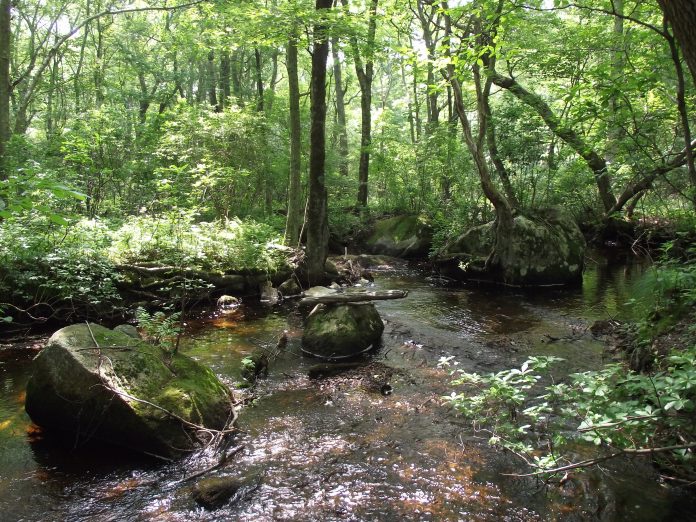
PROVIDENCE – The Wood-Pawcatuck Watershed Wild and Scenic River bill was signed into law, Sen. Jack Reed, D-R.I., announced Tuesday, permanently designating river segments of the Wood-Pawcatuck watershed as part of the National Wild and Scenic Rivers System.
The bill was part of a larger public lands package to protect 1.3 million acres, 2,600 miles of new national trails and 367 miles of rivers. The bill will establish Rhode Island’s first ever Wild and Scenic river system and provide access to federal funding to protect and maintain the rivers in the watershed for recreation, fisheries and water quality preservation, according to Reed.
A river’s wild designation indicates that there is little development in the area and a scenic designation indicates that there are roads to access the river.
The legislation includes parts of seven rivers in the Wood-Pawcatuck Watershed: The Beaver, Chipuxet, Green Fall-Ashaway, Queen-Usquepaugh, Pawcatuck, Shunock and Wood rivers in Rhode Island and Connecticut.
“This is a significant victory for Rhode Island that would not have been possible without the dedication of our local advocates who worked tirelessly to make this designation a reality,” said U.S. Rep. James R. Langevin, D-R.I. “After years of hard work at the local, state and federal levels, we are taking a firm step to preserve the beauty and ecological value of the Wood-Pawcatuck waterways for generations to come. I thank my colleagues in the Rhode Island and Connecticut delegations for their longstanding commitment to protecting this natural resource.”
Langevin and U.S. Rep Joe Courtney, D-Conn., introduced the Wood-Pawcatuck Watershed Protection Act in 2011. Reed authored the Senate bill and introduced it in 2012.
“These stretches of rivers support a lot of wildlife and they are critical to our communities. Securing the federal ‘wild and scenic’ designation is a win for Rhode Island and will help preserve the entire watershed and help more federal conservation funds flow to the state,” stated Reed.
The designation does not give control of the protected land to the federal government or prohibit future development, Reed said.
The plan to protect the watershed was developed in consultation with town-appointed representatives from Charlestown, Exeter, Hopkinton, North Kingstown, Richmond, South Kingstown, Westerly and West Greenwich in Rhode Island and North Stonington, Sterling, Stonington and Voluntown in Connecticut, Reed said.
A bi-state study committee also included partners from the R.I. Department of Environmental Management, the Conn. Department of Energy and Environmental Protection, the Wood Pawcatuck Watershed Association, Save The Bay, The Nature Conservancy and the Audubon Society of Rhode Island. Technical assistance for the study was provided by the National Park Service.
“WPWA took on this initiative because the watershed’s residents love their local rivers and have worked diligently for generations to protect and preserve its unique natural resources,” said WPWA Executive Director Chris Fox. “The time has finally come to not only federally protect these resources, but also nationally recognize and celebrate the passionate protection efforts that have already been made by the watershed’s residents.”
Chris Bergenheim is the PBN web editor. Email him at Bergenheim@PBN.com.












